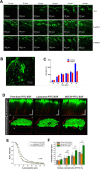Recent advances in transdermal drug delivery systems: a review
- PMID: 34321111
- PMCID: PMC8317283
- DOI: 10.1186/s40824-021-00226-6
Recent advances in transdermal drug delivery systems: a review
Abstract
Various non-invasive administrations have recently emerged as an alternative to conventional needle injections. A transdermal drug delivery system (TDDS) represents the most attractive method among these because of its low rejection rate, excellent ease of administration, and superb convenience and persistence among patients. TDDS could be applicable in not only pharmaceuticals but also in the skin care industry, including cosmetics. Because this method mainly involves local administration, it can prevent local buildup in drug concentration and nonspecific delivery to tissues not targeted by the drug. However, the physicochemical properties of the skin translate to multiple obstacles and restrictions in transdermal delivery, with numerous investigations conducted to overcome these bottlenecks. In this review, we describe the different types of available TDDS methods, along with a critical discussion of the specific advantages and disadvantages, characterization methods, and potential of each method. Progress in research on these alternative methods has established the high efficiency inherent to TDDS, which is expected to find applications in a wide range of fields.
Keywords: Active/passive method; Characterization; Skin; Transdermal drug delivery.
© 2021. The Author(s).
Conflict of interest statement
The authors declare no conflict of interest.
Figures






References
-
- Vargason AM, Anselmo AC, Mitragotri S. The evolution of commercial drug delivery technologies. Nat Biomed Eng. 2021. 10.1038/s41551-021-00698-w. - PubMed
-
- Mali AD, Bathe R, Patil M. An updated review on transdermal drug delivery systems. Int J Adv Sci Res. 2015;1(6):244–254. doi: 10.7439/ijasr.v1i6.2243. - DOI
-
- Kumar JA, Pullakandam N, Prabu SL, Gopal V. Transdermal drug delivery system: An overview. Int J Pharm Sci Rev Res. 2010;3(2):49–54.
Publication types
LinkOut - more resources
Full Text Sources
Other Literature Sources

